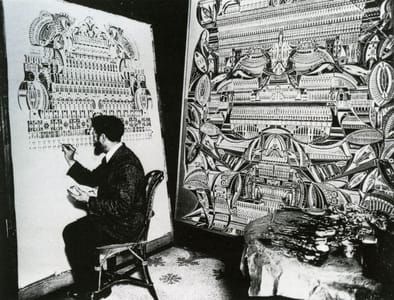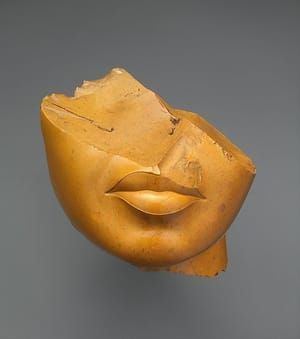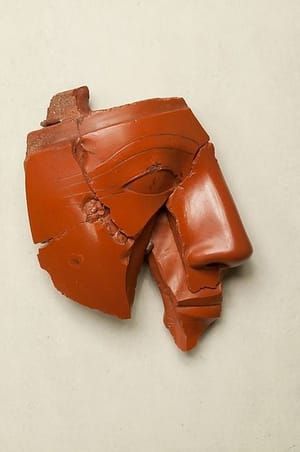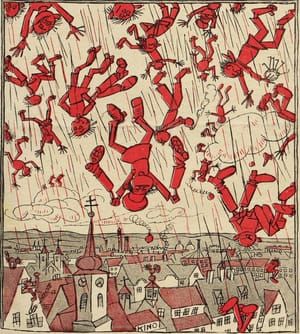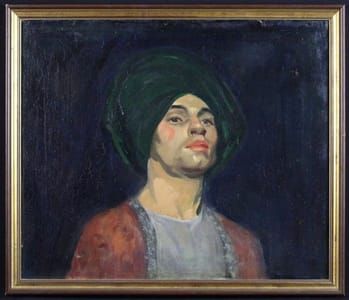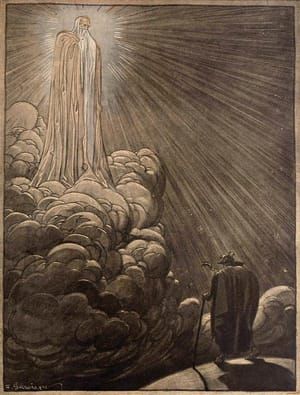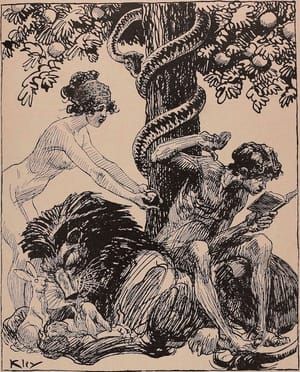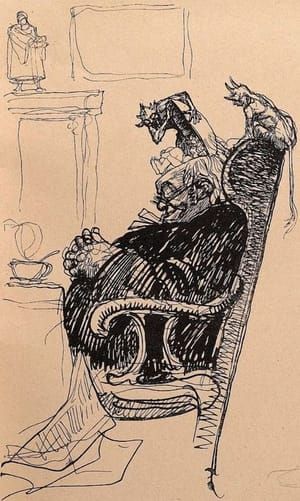
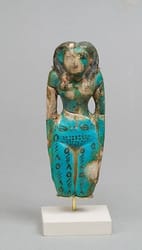
Statue of a Female Figure, 1640-1850 BC
Unknown
Middle Kingdom, Dynasty 12, late–early 13, ca. 1850–1640 BC ?
Female figures of this type, often found with burials especially of the Middle Kingdom, were in the past called "concubines." Nowadays they are understood in a more general sense as representations of the life-giving female powers of sexual attraction and giving birth, powers from which the dead could derive a new life. As most representatives of the type, this faience figure lacks the lower legs and has elaborate tatoos all over its body. The figure also wears a girdle of cowrie shell shaped beads and a long bead necklace crossed over the chest. The hair is arranged in the so-called "Hathor" style – two thick tresses with curled ends falling forward over the shoulders.
From Egypt, Memphite Region, Lisht North, cemetery east of Senwosret (758), Pit 752, MMA excavations, 1906–07
(http://metmuseum.org/art/collection/search/544220?rss=1)
Uploaded on Apr 27, 2017 by Suzan Hamer
Unknown
artistArthur
Wait what?
